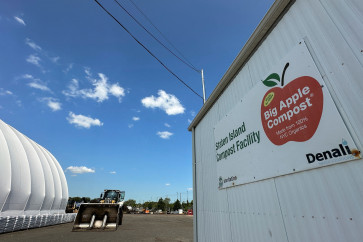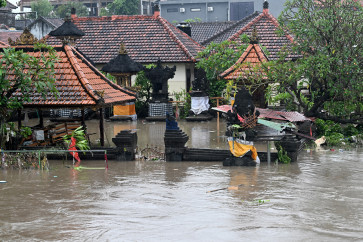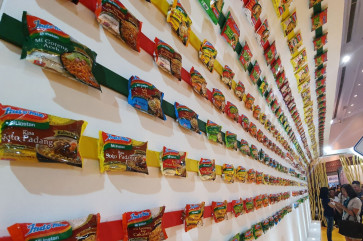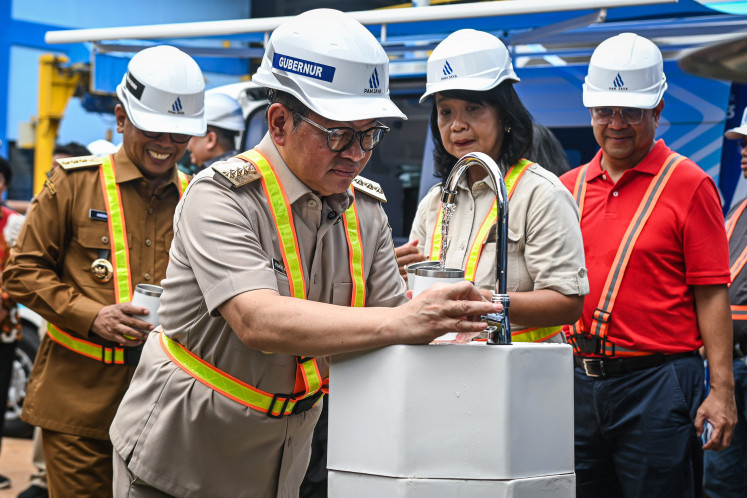Popular Reads
Top Results
Can't find what you're looking for?
View all search resultsPopular Reads
Top Results
Can't find what you're looking for?
View all search resultsVisit Tsukiji, a 'great wonder of the world,' while you still can
Some 480 different kinds of seafood, with $14.6 million worth sold daily. Japan’s iconic fish market is still booming after 82-years—for now.
Change text size
Gift Premium Articles
to Anyone
I
f you're visiting Tokyo and looking forward to eating well, chances are you’ve been told not to miss Tsukiji, the oldest and biggest fish market in the world. From being the focus of such popular movies as Jiro Dreams of Sushi to being the backdrop of pop music videos (remember Clean Bandit?), the iconic market has become synonymous with Japan's world famous food culture. Tripadvisor.com ranks it among the top five things to do in the Chuo Ward, the heart of the city that includes the booming Ginza district. It’s here that a single Bluefin tuna sold for $632,000 in January.
Yet its fate remains in waters as muddy as Tokyo Bay.
Back in 2001, citing safety and sanitary concerns about the dilapidated structures, the Tokyo metropolitan government decided to relocate the market to some reclaimed land in the Toyosu district, about 4 kilometers (2.5 miles) away. The move would also allow construction of a major road to connect Olympic venues for 2020, the Asahi Shimbun reported. But with an "astonishing" $5.7 billion price tag and a series of safety investigations into contaminated soil at the proposed site, Tokyo’s new governor, Yuriko Koike, postponed the move indefinitely in August 2016; it had been scheduled for November.
The debate remains hot for the Tokyo government, which recently started mulling a restructuring of the current site from scratch. (To complicate matters further, recent investigations found that the current market site at Tsukiji also tested positive for higher-than-legal levels of pollutants such as arsenic, reported the Asahi Shimbun. Tokyo Governor Koike has said that the levels are not high enough to raise public alarm.)
However it shakes out, Tsukiji will certainly change. So there is no time like the presentto join the throngs of people exploring the nooks and crannies of the market, gawking at sea creatures seldom seen whole.
Read also: New Tokyo leader postpones plan to move famous fish market
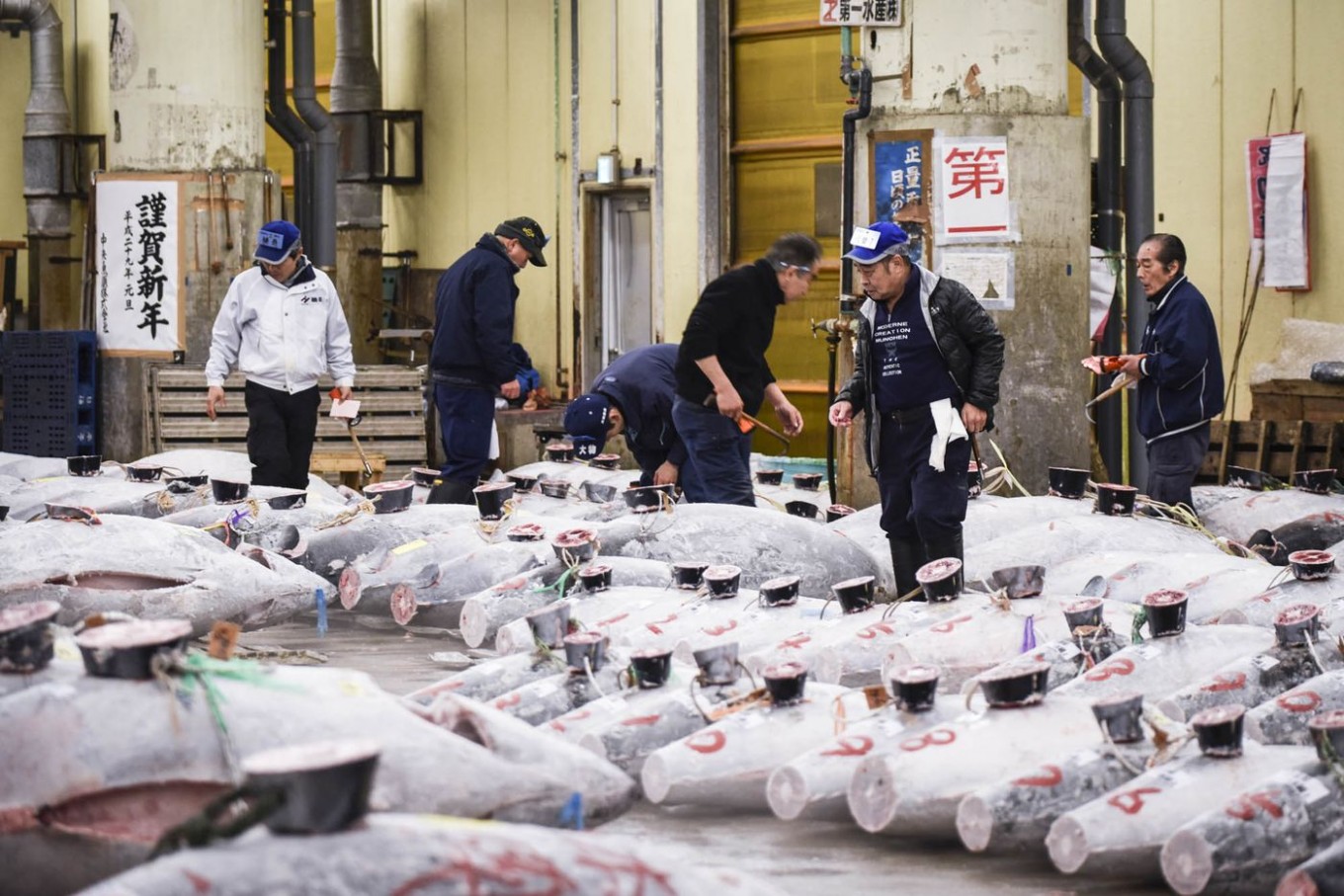 Buyers inspect frozen tuna prior to the first auction of the year at Tsukiji Market, on Jan. 5, 2017. A single 212-kilogram (467-pound) bluefin tuna hammered that morning for 74.2 million yen ($636,000).(Bloomberg/Noriko Hayashi)
Buyers inspect frozen tuna prior to the first auction of the year at Tsukiji Market, on Jan. 5, 2017. A single 212-kilogram (467-pound) bluefin tuna hammered that morning for 74.2 million yen ($636,000).(Bloomberg/Noriko Hayashi)
“Tsukiji is one of the great wonders of the world,” said celebrated American chef David Chang, founder of the Momofuku restaurant group. “There are fish markets all over the world and throughout Japan, but there's nothing like Tsukiji. The freshness is staggering, and so is the variety. Everyone is a specialist: You have the clam guy, the uni guy, the mackerel guy.”
According to last year’s government pamphlet (PDF), the market handles about 480 types of seafood and about 270 types of produce, both domestic and imported. A day at Tsukiji see about 1,628 tonnes (3.6 million pounds) and 1.6 billion yen ($14.6 million) worth of seafood move through on average. That $250-a-tray Shakotan uni makes a pit stop here after being plucked from the cold waters around Hokkaido; a top sushi master in New York crafts his nightly omakase based on the day’s catch.
Outside the wholesale market lies an additional dimension of restaurants and shops, serving everything from kitchenware, dried seafood goods, Japanese knives, and sweets. Up to 42,000 people pass through in a day.
Tsukiji dates back to 1935, after a massive earthquake in 1923 eventually forced the fish market to be relocated to the current location, next to posh Ginza. The rusty, old structures, some more than 80 years old, contrast starkly against neighboring skyscrapers. From the end of World War II through the first Tokyo Olympics and up to the 1980s, when the country enjoyed its economic bubble, Tsukiji has been there.
“It's its own city, its own culture, its own everything,” said Chang. “You might not see anything new there, but Tsukiji isn't about new, it's about craftsmanship and excellence and tradition."
Read also: Top concierges share the secrets of Asia’s busiest cities
Seeing the tuna auction
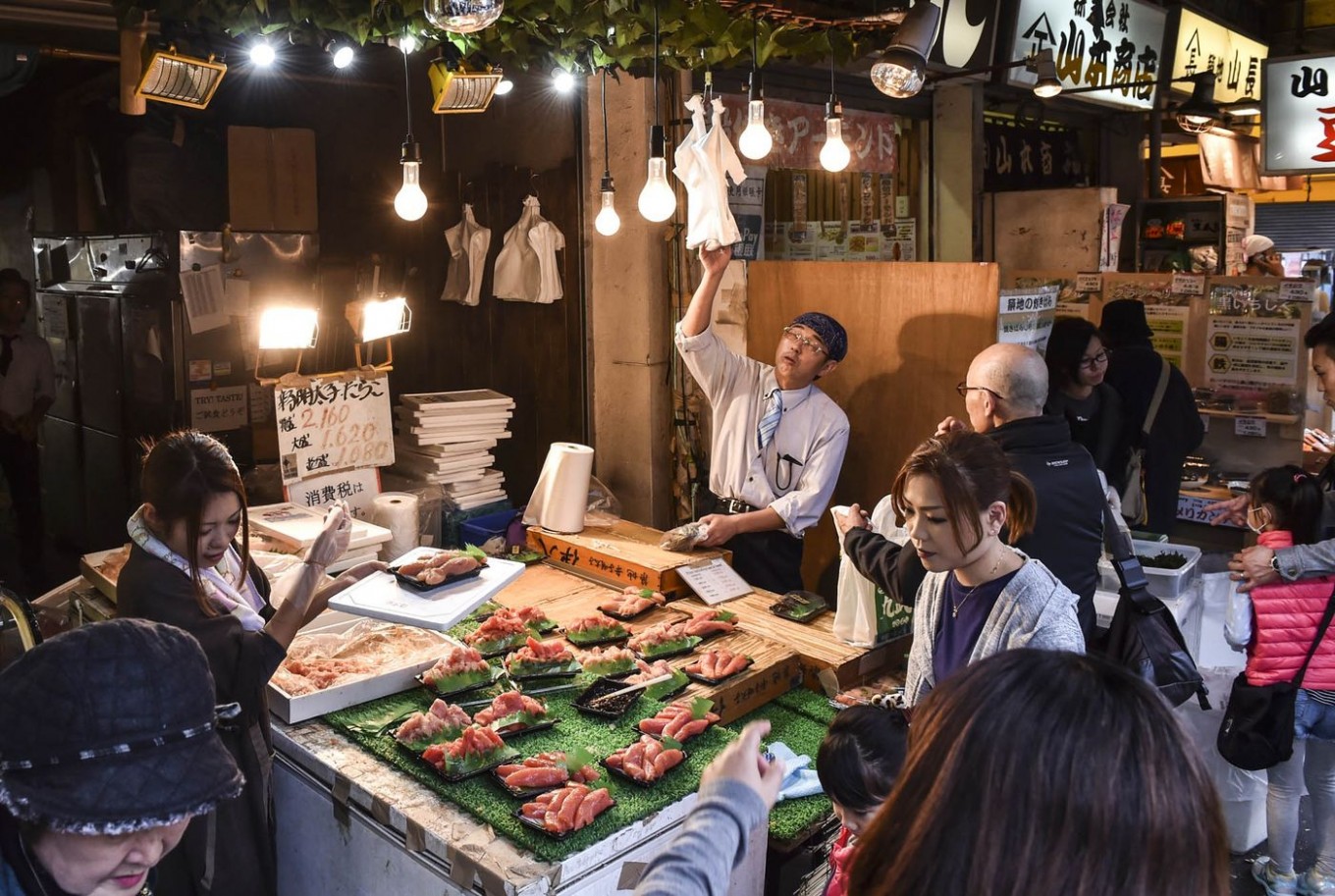 Customers gather around a seafood shop in Tsukiji fish market.(AFP/Kazuhiro Nogi)
Customers gather around a seafood shop in Tsukiji fish market.(AFP/Kazuhiro Nogi)
If you're feeling ambitious and ready to take advantage of your jet lag, consider visiting in the wee hours of the morning to observe the famous tuna auction.
The market is typically closed on Sundays and Wednesdays, as well as on national holidays. Because tickets are restricted, you'll have to head before 5 a.m. to sign up at the Fish Information Center near the Kachidoki Bridge (PDF: Tsukiji market map) to win one of 120 available spots. If a lot of applicants turn up early, registration might open and reach capacity well before 5 a.m., so many recommend getting there as early as 3 a.m. or 4 a.m.
Visiting the main market
It might be early in the morning, but it's serious business time for experts seeking the best catch, so be careful not to interfere with any transactions. The official market website warns that flash photography is prohibited in the auction area as it's heavily trafficked by forklifts and trucks. In the main market, use your judgement.
Most of the shops close up by 3 p.m. No reservations are required to wander around the hundreds of fishmongers outside the auctions. But as much as a tourist attraction it may be, remember that this is an active commercial site. Parents are advised to leave babies, small children, and strollers behind.
Read also: Tsukiji still charms even after morning fish auction
Guided tours
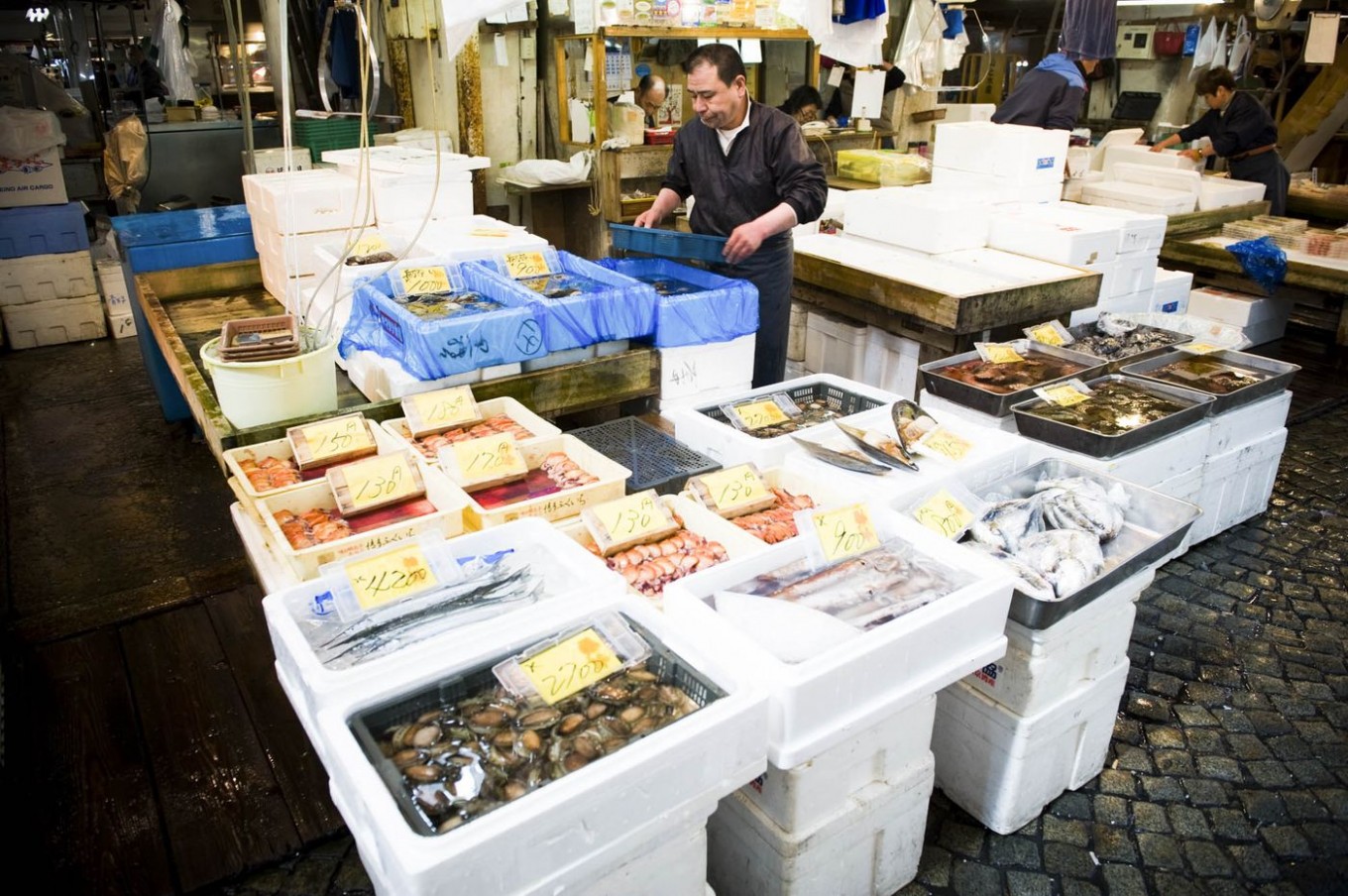 A fishmonger arranges his stall.(AFP/File)
A fishmonger arranges his stall.(AFP/File)
It's fun to wander around the market on your own, but if you're someone that wants a bit of guidance on the market's rich history and background (and all the food your eyes will be bombarded with), consider a guided tour group. Tsukiji Sushi Insider Workshop offers tours of the fish market and can clinch you a spot at the tuna auction, too.
Where to eat, what to eat
Whether you’re a newly arrived tourist or a local with some sake running through your veins, a late-night, early-morning sushi session can be an experience that stays with you for life.
Park Hyatt Tokyo concierge Rena Kawakami said that sushi restaurants within and outside the fish market are all very good. But one that's widely discussed by travelers and locals is Sushi Dai. As with the tuna auction, visitors line up as early as 5 a.m. to have a bite of sushi; wait times have been known to stretch four hours. The menu has omakase sets—the chef gives you his selection of the sushi—ranging from 2,600 yen to 4,000 yen. Go ahead and treat yourself to some beer; after all, it is lunchtime for the workers in the market.
If you're not feeling up for sushi, walk over to Chosei-an for some hearty soba noodles with tempura.
And for those with a sweet tooth, there's Mosuke Dango, a local’s favorite amongst our own Tokyo bureau. It’s been serving sweet rice-flour dumplings on a stick smothered in red adzuki beans since it was founded 119 years ago.


